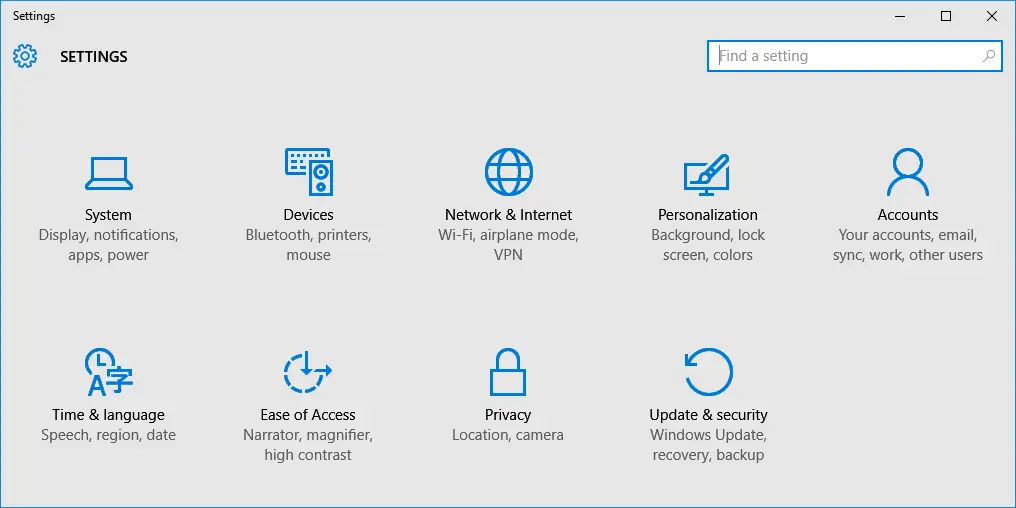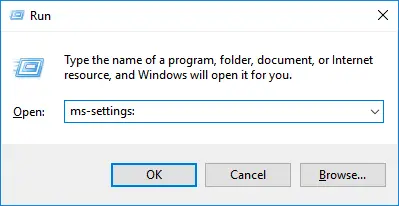Disclaimer: This post may contain affiliate links, meaning we get a small commission if you make a purchase through our links, at no cost to you. For more information, please visit our Disclaimer Page.
Have you upgraded to Windows 10 yet?
Over the last few months, Microsoft stopped giving the free upgrade to Windows 10 for Windows 7, 8.1 users. However, you can still get this free upgrade with this method. If you haven’t upgraded yet, grab it before too late. Otherwise, you’ll have to spend around $200 to purchase a new Windows 10 license.
Windows 10 comes with a lot of new features, including new Start menu, Cortana, Task Switcher, Snap Assist, Action Center, improved Windows Explorer, Edge browser, multiple desktops, Universal apps, new Settings & Control Panel, Windows Hello, DirectX 12, and much more.
The feature that I want to discuss in this article is the new Settings app. It comes with a new design language and has all the necessary settings in one place. You can easily access any settings you want. Most settings are sorted in categories, and you can quickly find relevant settings in seconds.
Read Article: The 6 Best SSDs You Can Buy
Of course, you can also access these settings by going to the Control Panel and choose the settings you want. However, you have to dig deeper into the Windows Control Panel to access those individual settings. Instead, you can access those settings through the new Settings application which is a much better solution.
In addition, the new Settings app allows you to access each setting directly by using the Run dialog box.
Read Article: How To Force Quit tvOS Apps On Your Apple TV
Don’t know what it is?
In this article, I will explain this further as well as the necessary commands you can use to access those individual settings.
Access Individual Settings Directly in Windows 10 With Commands
To perform the Run commands below, you need to press Windows + R and then type the appropriate command to open the setting you want. For example, to open the Settings app, press Windows + R and then type: “ms-settings:” without the quotes and press Enter.
Similarly, here are other necessary Run commands you can use to access other essential settings:
System
- ms-settings:display – Open display settings and customize your display.
- ms-settings:optionalfeatures – Manage optional features.
- ms-settings:notifications – Manage notifications and actions.
- ms-settings:tabletmode – Enable or disable tablet mode.
- ms-settings:batterysaver-usagedetails – Check battery usage.
- ms-settings:batterysaver – Enable or disable battery saver.
- ms-settings:batterysaver-settings – Access battery saver settings.
- ms-settings:powersleep – Manage power and sleep.
- ms-settings:maps – Offline maps.
- ms-settings:storagesense – Manage storage.
- ms-settings:about – About system.
Devices
- ms-settings:connecteddevices – Manage connected devices.
- ms-settings:bluetooth – Access Bluetooth settings.
- ms-settings:mousetouchpad – Access settings of mouse and touchpad.
- ms-settings:typing – Typing settings.
- ms-settings:usb – USB settings.
Network and Internet
- ms-settings:network-wifi – Enable or disable WiFi.
- ms-settings:proximity – Enable or disable flight mode.
- ms-settings:network-wifisettings – Manage WiFi settings.
- ms-settings:datausage – Manage data usage.
- ms-settings:network-vpn – Access VPN settings.
- ms-settings:network-dialup – Dial-up.
- ms-settings:network-ethernet – Ethernet settings.
- ms-settings:network-proxy – Proxy configuration.
Personalisation
- ms-settings:personalization – Personalisation.
- ms-settings:personalization-background – Background.
- ms-settings:colors – Colors.
- ms-settings:lockscreen – Lock screen.
- ms-settings:themes – Manage themes.
- ms-settings:personalization-start – Start menu.
Accounts
- ms-settings:emailandaccounts – Manage email and accounts.
- ms-settings:signinoptions – Manage sign-in options.
- ms-settings:workplace – Work access.
- ms-settings:otherusers – Manage family and other users.
- ms-settings:sync – Sync settings.
- Time and Language Category
- ms-settings:dateandtime – Manage and modify date and time.
- ms-settings:regionlanguage – Manage and modify region and language.
- ms-settings:speech – Speech settings.
Ease of Access
- ms-settings:easeofaccess-narrator – Narrator.
- ms-settings:easeofaccess-magnifier – Magnifier.
- ms-settings:easeofaccess-highcontrast – High contrast.
- ms-settings:easeofaccess-closedcaptioning – Closed captions.
- ms-settings:easeofaccess-keyboard – Keyboard.
- ms-settings:easeofaccess-mouse – Mouse.
- ms-settings:easeofaccess-otheroptions – Other options.
Privacy
- ms-settings:privacy – General privacy settings.
- ms-settings:privacy-location – Location.
- ms-settings:privacy-webcam – Camera settings.
- ms-settings:privacy-microphone – Microphone.
- ms-settings:privacy-speechtyping – Speech, inking and typing.
- ms-settings:privacy-accountinfo – Account information.
- ms-settings:privacy-contacts – Contacts.
- ms-settings:privacy-calendar – Calendar.
- ms-settings:privacy-callhistory – Call history.
- ms-settings:privacy-email – Email.
- ms-settings:privacy-messaging – Messaging.
- ms-settings:privacy-radios – Radios
- ms-settings:privacy-customdevices – Other devices.
- ms-settings:privacy-feedback – Feedback and diagnostics.
- ms-settings:privacy-backgroundapps – Background applications.
Update and Security
- ms-settings:windowsupdate – Windows update.
- ms-settings:backup – Windows backup settings.
- ms-settings:developers – For developers.
These are all the Run essential commands. If I have missed any commands, let me know by dropping a comment below. I will update the article as soon as I read it.


